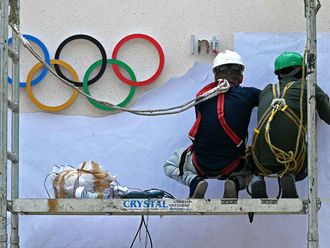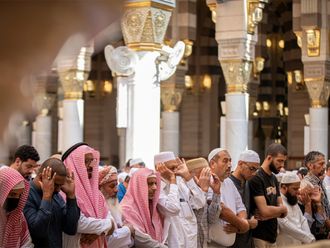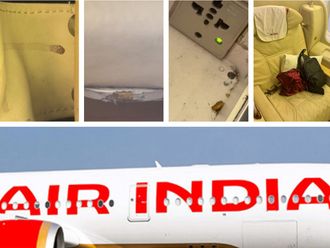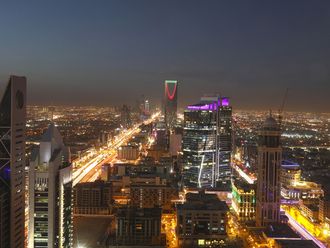
Splurge on a new cooking range, make over a living room or simply put money down on a new home. Buying new clothes is necessary by custom. Not buying gold or silver could almost be seen as flouting age-old rules. And, of course, it is customary to buy gifts for all.
Diwali, which celebrates prosperity, was probably devised by an economist who knew that consumers who spend keep the economy afloat. During what is essentially the world’s oldest shopping festival, all signs of economic activity – bringing home new gadgets, wearing new clothes, buying gold – are said to hold Lakshmi’s (the goddess of wealth) attention a little longer, cajoling her into staying with you.
Increased expenditure
From potters who turn up overnight on street corners with hundreds of clay lamps to car companies in India — six of which have new launches this Diwali — retailers plan their strategies knowing that the Indian customer is more likely to make purchases during Diwali than any other time of the year. “Per capita expenditure witnesses a minimum rise of 25 to 30 per cent every year around Diwali,” Shabori Das, Research Analyst at Euromonitor International, tells GN Focus. “Sales for many industries such as apparel, home furnishing, electronics and beauty products all shoot up. Especially for electronics and appliances manufacturers, sales during Diwali constitute up to 50 per cent of the total annual volume sales.”
International companies in India who have been making inroads since laws permitting foreign direct investment (FDI) were eased in 2006, have chosen Diwali to be part of the growing retail story. “More than any other festival, Diwali has a religious value attached to shopping. Come what may — depression, recession, boom — regardless of world markets, our consumers will shop,” says Karim Merchant, CEO and MD at UAE-based Pure Gold Jewellers, which also has a thriving business in India.
Focus on gold
In Dubai, the focus during the festival is on gold, for both residents and tourists. Dubai is an accepted destination for those looking to buy silver and gold on Dhanteras, which is celebrated two days before Diwali. “Sales are highest where you have the most affluent Indians. Year-on-year our per invoice ticket price is higher in Dubai than in India,” says Merchant. “Shopping during the festival accounts for about 5 to 7 per cent of our annual sales,” he says, adding that the company’s gold sales during the festival go up 25 per cent, setting aside bullion and disregarding factors such as appreciation or depreciation.
Other jewellers such as Joy Alukkas and Malabar Gold too have sales strategies targeting this market. Shoppers buy new items and exchange old ones, carefully monitoring making charges and daily rates.
Jewellery major Damas is celebrating Diwali with its biggest campaign in the company’s 105-year history, introducing a new brand ambassador and a new collection.
“As an added incentive, Damas has also announced a new gold exchange offer — customers can exchange gold jewellery (from any retailer) for new gold or diamond Damas jewellery, with zero deduction on the prevailing gold rate,” says Rajesh Govindan, UAE Sales Manager, Damas, which also has a substantial presence in India.
Top destination
For most brands the Indian consumer is a familiar one at their international maisons. According to a 2012 trend study by CPP Luxury Industry Management Consultants, “The top tier segment of the super rich has been undeterred in its habit to shop for luxury branded products abroad, the top destinations being London and Singapore. For the upper middle class…the number one destination in 2012 is Dubai.”
The nimble Indian is wooed right from the airport — October saw Chanel advertising its watches, which sell upwards of Rs250,000 (about Dh16,900), on billboards on the way to the swanky T3 terminal of New Delhi airport.
Even so, the offering is customised in India, where Diwali’s biggest retail impact can be felt. “Those brands which make themselves more relatable to the local consumers’ habits, culture, festivals, expenditure patterns, per capita income and mode of payment, will definitely have an edge over other players,” says Das.
When brands choose to reach Indian consumers, it’s the sari that often acts as the bridge. Louis Vuitton even cut up Benarasi saris to fashion skirts and shorts, re-editing 40 pieces from the summer 2010 and winter 2010 styles for its Diwali collection that year, selling them exclusively in the Louis Vuitton Paris Montaigne store.
Hermès, an old India hand, with its Beloved India series, timed the launch of its limited-edition sari for Diwali last year. “It did very well. This year, we have created a nice story and introduced a new weaving process with the indigo scarf,” a company spokesperson tells GN Focus. Called the silk square, it is hand-tinted in tribute to an artisanal tradition from Bengal.
It may have, inadvertently, sown the seeds of the rule according to which foreign single-brand retailers with FDI exceeding 51 per cent should preferably source 30 per cent of requirements from micro, small and medium enterprises.
Indian influence
This year, with 100 per cent FDI being permitted in single-brand retail, there is even more activity during the festival. Italian fashion and leather goods brand Gucci has a limited-edition bag, fittingly called the Gurgaon bag, to celebrate the November launch of its largest Indian store in the township by the same name. Leather goods brand Tod’s D bag’s limited edition in India is simply being called the Diwali D bag.
Brands selling high-end writing instruments such as the Sailor Pen from Japan and the Swiss Caran d’Ache have created pens with depictions from Indian mythology — it helps that pens and other weapons are objects of worship on Dussehra, a related festival about 20 days before Diwali. Clothing brand Canali, which launched its India-centric Nawab bandhgala jacket some years ago, has put out a pink velvet edition with 13 pieces — coincidentally matching the date of Diwali this year, November 13. ■











